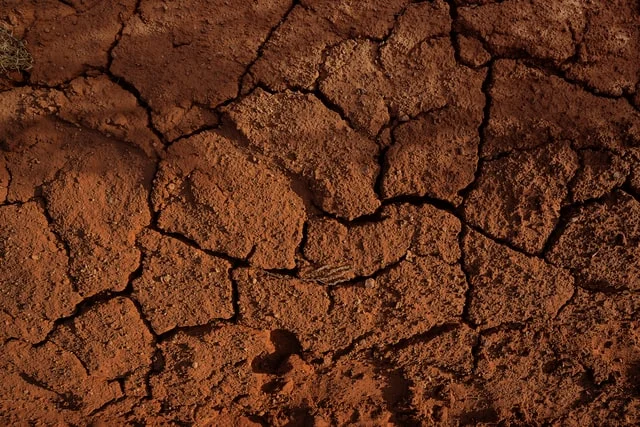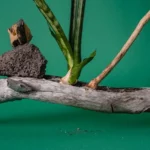ZZ plant is a very popular plant and is used in many homes. Zamioculcas zamifolia plant is a popular indoor plant in the growing market.
It’s easy to grow and looks very beautiful in the house or office. This is a fast-growing plant that you can use as a houseplant.
This plant is a tall, green-leafed plant with thick stems and flowers with white edges. It’s easy to grow, but it requires some soil conditions that are not available at home; therefore, growing ZZ indoors is preferred.
When you buy this plant, check the soil it comes in. If it has been overwatered, you need to replace the soil.
Read more: ZZ Plant Propagation
Table of Contents
The Ideal Soil For ZZ Plant
Many people believe that plants should be kept in their natural habitat, but the ZZ plant does not have a natural habitat.
The soil that comes in may not be perfect for the plant because the previous owner could have overwatered it.
This means that the soil could be compacted and may not have good aeration for your plant to breathe properly.
Can I use cactus soil for the ZZ plant?
The ZZ plant is a member of the Arum family. Because it is in the Arum family, it is best to use soil that is similar to what you would use for a common houseplant.
Cactus soil is not the best soil to use for the ZZ plant. It is too dry and will cause root damage to the plant.
I don’t recommend using cactus soil, or any other type of sandy soil. This type of soil holds water very well but does not hold onto nutrients well. The nutrients will leech out of the soil and into the water with which you are watering with.
This will cause a nutrient deficiency in your ZZ plant, which can stress out your plant and eventually kill it if it continues for a long time.
Read more: ZZ Plant Yellow Leaves – Causes & Solutions
Do ZZ plants like acidic soil?
Many people believe that ZZ plants like acidic soil. This is not the case. ZZ plants like soil that is neutral to slightly alkaline. Many plants like acidic soils and it is okay to use acidic soil if you want to, but I do not recommend it for the ZZ plant.
People sometimes use peat moss in the soil of their ZZ plants. Peat moss is acidic, so this is the reason why people believe it needs acidic soil.
I do not recommend using peat moss for many reasons. It is important to remember that peat moss is often harvested from drained areas of swamps and bogs.
This means it can contain high levels of toxins and other harmful chemicals, such as mercury and arsenic. Because of this, it should be avoided at all costs.
What kind of soil do ZZ plants need?
The best soil to use for ZZ plants is soil that is light, airy, and holds enough moisture that the plant can get by without needing to be watered every day.
The best soil I have come across for ZZ plants is an African Violet soil mix. You can buy this at your local nursery or buy it online.
It is very easy to find and it will work great for your ZZ plant. This type of soil also works well with other houseplants and comes in many different colors. You can find a color that will match the decor in your home or office.
Read more: Zz Plant Watering – Full Guide
Frequently Asked Questions
How do I repot my ZZ plant?
Step 1:
Remove the ZZ plant from its pot. If the roots are clumped together, you can carefully separate them with your fingers. Do not pull away from the plant.
If you are repotting your ZZ in a larger pot, I recommend placing it in a new pot that is one size larger than the current pot.
This will allow for some room to grow and will give you time to establish a feeding schedule.
Step 2:
Prepare your new soil by adding fresh soil and mixing it well with the old soil. You should use half old soil and half new soil.
Step 3:
Place your ZZ plant into the new pot, but do not bury it too deep. Make sure that there is enough room between the top of the soil and the rim of the pot so that water can drain out of the bottom of your pot.
The ZZ plant needs to have good drainage and needs air circulation around its roots to stay healthy. If you bury it too deep there is a chance that it will rot due to a lack of air circulation around its roots.
This is especially true if you live in an area where there are high humidity levels or where temperatures stay above 80 degrees.
Step 4:
Water your plant with room temperature water. If you want to use distilled water this is ok, but it is not required. The soil should be wet enough that the ZZ plant will not wilt within an hour after watering.
Make sure to water from the bottom of the pot and let it drain out of the bottom of the pot before watering again.
Read more: ZZ Plants’ Toxicity to Cats
When should I repot my ZZ plant?
If your ZZ plant is overwatered and you are seeing signs of overwatering, like yellow leaves, then I would repot it immediately. I usually would go ahead and repot it with fresh soil.
You can repot your plant whenever you feel it is necessary to do so. If you are just going to repot your ZZ plant because the pot is old and ugly, then that is ok too. Repotting a ZZ plant is not a very difficult task to do.
Should I repot the ZZ plant?
Yes, you should repot your ZZ plant every two or so years. You can wait longer if the pot is still in good shape, but I have found that it is easier to keep an eye on the moisture levels when the plant is in a new pot.
Lighting Conditions For Your ZZ Plant
ZZ plants will grow very well in indirect sunlight. Give this plant about 4 hours of bright light or filtered sunlight per day. They prefer to have medium light (about 30% of full sun) and high humidity.
But also can grow well in low light conditions (low light = low temperature). This plant will not tolerate direct sunlight exposure, it will die if exposed directly to sunlight for long periods.
So, you should avoid sitting your ZZ plant near windows which receive direct sunlight for long periods every day.
The best place for this plant is on the windowsill where it gets indirect sunlight from one side only or several feet from the window where it receives indirect sunlight or morning sun only.
If there is too much direct sunlight, this will burn your plant leaves and cause the yellowing of leaves.
If you have a south, east or west-facing window, the plant will grow well and receive some extra light in the wintertime. But don’t forget to put a sheer curtain over that window in summer when sunlight becomes very strong.
And the best place for this plant is on the windowsill where it gets indirect sunlight from one side only or several feet from the window where it receives indirect sunlight or morning sun only.
Best Temperature For ZZ To Grow
The ideal temperature for this plant is between 65°F and 75°F (18°C – 24°C). This plant will not tolerate freezing temperatures and cannot survive outdoors in cold climates. It will die if exposed directly to freezing temperatures for long periods.
So, you should take care of your ZZ plants, especially in the winter season.
You need to protect this plant from low temperatures by keeping it inside your home or covering it with a blanket to prevent freezing weather outside and then bring it back outside after cold weather is gone.
If you live in warm areas like Florida, you don’t need to worry about cold weather because it doesn’t occur there so much as the temperature stays warm all year round.
Read more: Best Soil for ZZ Plant: Everything You Need to Know
Watering Your ZZ Plant
ZZ plants will not tolerate overwatering. ZZ plant will require frequent watering when it is small but as it grows, this plant will need less frequent watering. This plant will need enough water to make its soil slightly moist.
You should water your ZZ plant by pouring water in the soil from a height of 8 to 10 inches (20-25 cm) to allow the soil to drain freely. Watering this plant with a garden hose is not recommended because that can cause root rot.
ZZ plant likes to be watered about once a week. Allow the soil to dry out between watering. Never allow the soil to dry out. This plant likes to be kept moist but not soggy or wet.
If you have been overwatering your plant, you may need to allow the soil to dry out completely and then begin watering again slowly and liberally until the old soil is replaced by new rich, light, fresh soil that is well aerated and has good drainage. ZZ does not like wet feet!
Photo by Clay Banks on Unsplash



